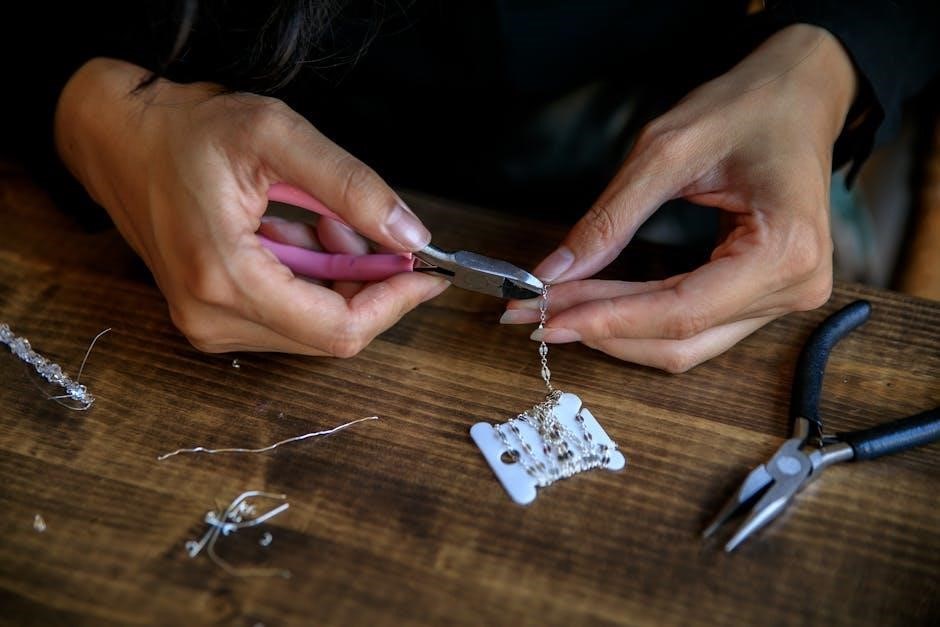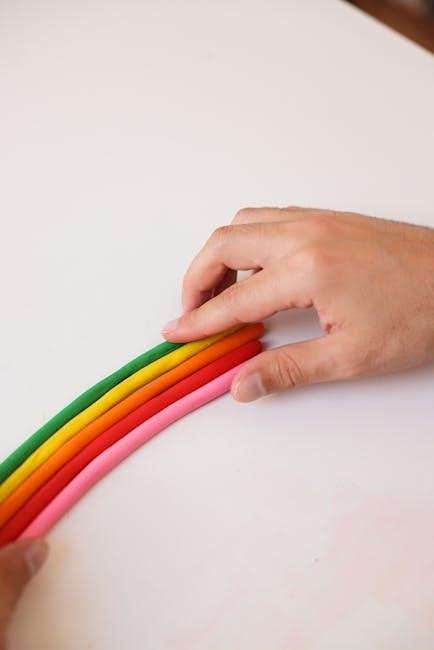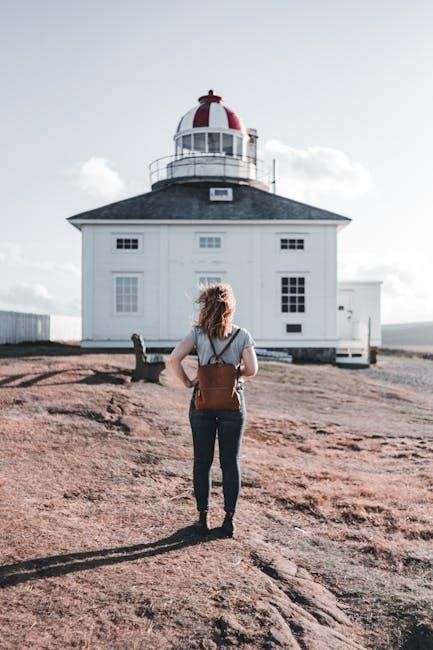Making a Murderer: A Comprehensive Viewing Guide
Making a Murderer is an American true crime documentary series that follows the story of Steven Avery, a man wrongly convicted. The show explores the complexities of the case and the justice system, presented over a ten-part series;
Overview of the Documentary
Making a Murderer is a compelling true crime documentary series that delves into the life of Steven Avery, a man from Manitowoc County, Wisconsin. The series meticulously chronicles Avery’s journey, beginning with his wrongful conviction in 1985 for sexual assault, for which he served 18 years before being exonerated.
The documentary then pivots to the events surrounding the murder of Teresa Halbach, a photographer who visited the Avery family’s auto salvage yard. Avery and his nephew, Brendan Dassey, were subsequently charged and convicted of Halbach’s murder, reigniting questions about the integrity of the investigation and the potential for corruption within local law enforcement.
Through extensive interviews, courtroom footage, and investigative analysis, Making a Murderer presents a gripping and thought-provoking examination of the American justice system. It explores themes of wrongful conviction, prosecutorial misconduct, and the challenges faced by those accused of heinous crimes.

The Case of Steven Avery
The case of Steven Avery is central to Making a Murderer. It involves his initial wrongful conviction, release, and subsequent arrest for the murder of Teresa Halbach, creating a complex legal battle.
Avery’s Initial Wrongful Conviction
Steven Avery’s initial wrongful conviction in 1985 is a crucial element of the Making a Murderer documentary. He was wrongly accused of the sexual assault of Penny Beerntsen, despite having a verifiable alibi, raising serious questions. Avery was sentenced and imprisoned for this crime, serving 18 long years before his exoneration due to DNA evidence that exonerated him.
His release uncovered flaws within the justice system and led to Avery filing a lawsuit against Manitowoc County law enforcement for their role in his wrongful conviction. This experience shaped the narrative and themes explored throughout the documentary. It highlighted issues of police misconduct and the devastating impact of wrongful convictions, setting the stage for his subsequent legal battles. The details surrounding the first case are crucial to understanding the complexities.
Teresa Halbach’s Murder and Avery’s Re-arrest
The central event in Making a Murderer is the murder of Teresa Halbach, a photographer who visited the Avery family’s auto salvage yard on October 31, 2005. Shortly after her disappearance, Steven Avery became a prime suspect. This leads to his re-arrest, marking a significant turning point in the documentary.
The investigation into Halbach’s murder unearths questions about the handling of evidence and the integrity of the investigation. As the investigation progresses, Avery finds himself back in jail, facing murder charges. The circumstances surrounding his arrest and the evidence presented raise doubts. The documentary meticulously examines these details, presenting conflicting accounts and highlighting potential oversights in the investigation. The re-arrest sets the stage for a legal battle that challenges the viewer’s perception of justice.

Key Players and Their Roles
Making a Murderer features a range of individuals, each with distinct roles. These include Steven Avery, his defense team, Brendan Dassey, law enforcement officials, and the Halbach family, all contributing to the narrative.
Steven Avery and His Defense Team
Steven Avery, at the center of Making a Murderer, is depicted as a man fighting against a system he believes has wronged him twice. Initially convicted in 1985, then charged again in 2005, Avery maintains his innocence throughout the documentary.
His defense team, led by Dean Strang and Jerome Buting, plays a crucial role, arguing that law enforcement framed Avery and neglected other leads. They challenge the evidence, question the investigation’s integrity, and highlight potential conflicts of interest.
Strang and Buting’s dedication to Avery’s case raises questions about the pursuit of justice and the potential for corruption within the system. Their legal strategies and courtroom arguments form a central part of the documentary’s narrative;
Their efforts to prove Avery’s innocence and expose alleged misconduct are a focal point, emphasizing the complexities of the case and the challenges faced by the defense.
Brendan Dassey and His Involvement
Brendan Dassey, Steven Avery’s nephew, is a key figure in Making a Murderer. His involvement stems from his confession to assisting Avery in the murder of Teresa Halbach, a confession that is heavily scrutinized throughout the series.
Dassey’s intellectual limitations and age at the time of the interrogation raise concerns about the validity of his statements. The documentary presents arguments that his confession was coerced and manipulated by law enforcement officials.
His case becomes intertwined with Avery’s, raising further questions about the fairness of the investigation and the legal process. The tactics used during Dassey’s interrogation are a central point of contention.
The legal battles fought on Dassey’s behalf, focusing on the admissibility of his confession and the potential violation of his rights, form a significant part of the series’ narrative, highlighting the vulnerability of individuals within the criminal justice system.

Season 1 Episode Breakdown
Season 1 of Making a Murderer meticulously details Steven Avery’s case, presenting key evidence and exploring the arguments from both the prosecution and defense across its episodes.
Notable Episodes and Key Evidence Presented
Several episodes in Season 1 stand out due to the crucial evidence and arguments they present. Episode 1, “Eighteen Years Lost,” introduces Steven Avery’s wrongful conviction and subsequent release, setting the stage for the series’ central narrative. Later episodes delve into the investigation of Teresa Halbach’s murder, highlighting questionable police procedures and potential conflicts of interest.
Key evidence presented includes forensic findings from the crime scene, Brendan Dassey’s controversial confession, and the defense’s attempts to raise doubts about Avery’s guilt. The series examines blood evidence found in Halbach’s vehicle, the discovery of her car on the Avery property, and the testimony of various witnesses. Each episode meticulously dissects these pieces of evidence, allowing viewers to form their own opinions about the case’s complexities and uncertainties. The episodes also analyze the potential planting of evidence.

Season 2 and Its Focus
Season 2 of Making a Murderer shifts its focus to the post-conviction process. New legal strategies are explored. Developments in both Steven Avery and Brendan Dassey’s cases, including the appeals process, are examined.
New Legal Strategies and Developments
Season 2 of Making a Murderer delves into the intricate world of post-conviction legal battles, introducing viewers to new strategies and developments in both Steven Avery and Brendan Dassey’s cases. Kathleen Zellner, a powerhouse lawyer known for her expertise in wrongful convictions, takes on Avery’s case, employing cutting-edge forensic testing and a relentless pursuit of alternative suspects. Her approach involves challenging the original evidence and presenting new theories about Teresa Halbach’s murder.
Meanwhile, Brendan Dassey’s legal team continues to fight for his release, focusing on the controversial circumstances surrounding his confession and the potential for coercion by law enforcement. The series explores their efforts to navigate the federal court system and challenge the validity of Dassey’s conviction. These legal maneuvers and investigative developments form the core of Season 2, providing a compelling look at the complexities of the American justice system and the fight for exoneration.
